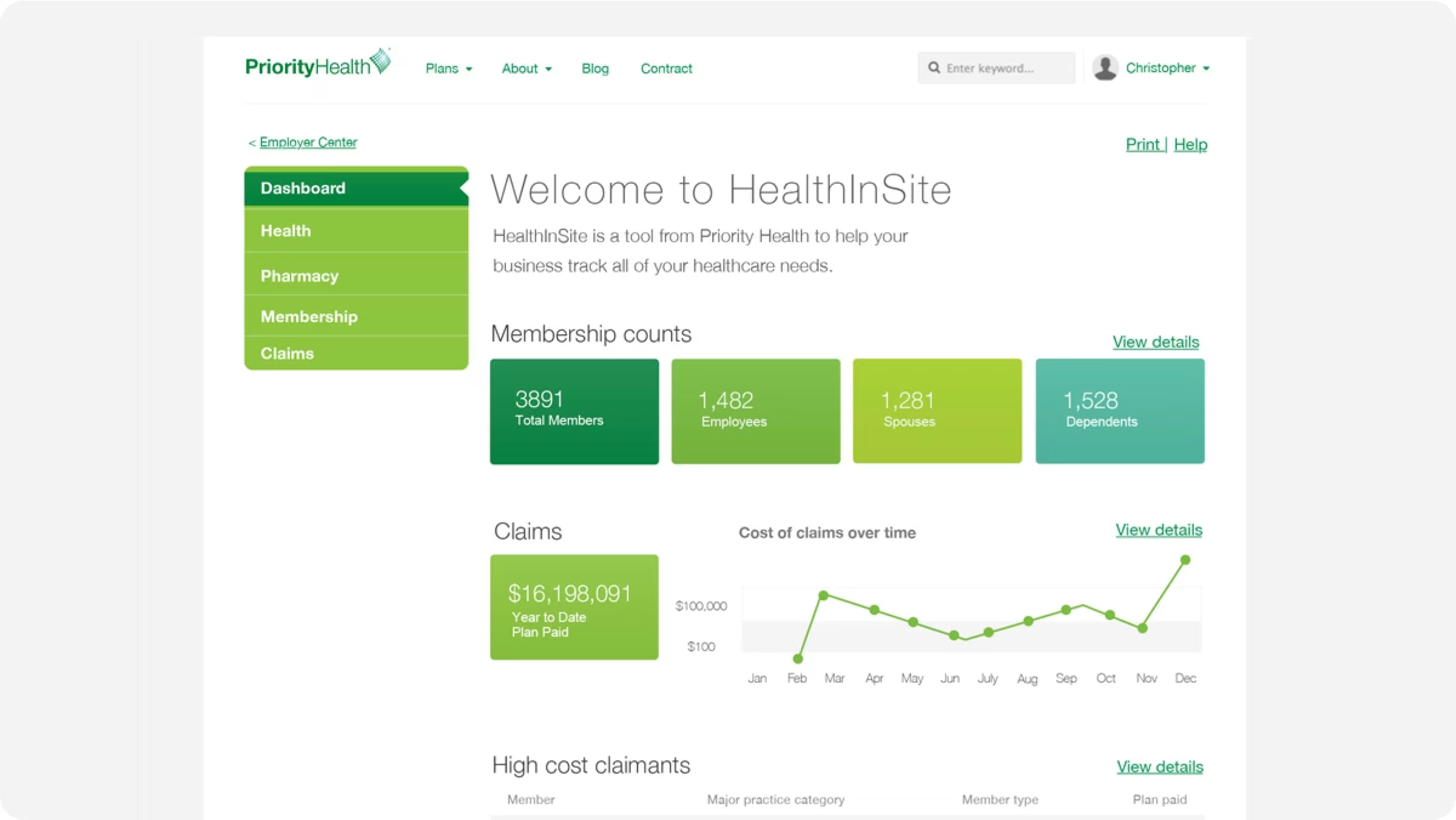Building a faster, smarter way for Priority Health to analyze customer data


Priority Health is an insurance company offering coverage for individuals, families, and businesses in Michigan. They focus on affordable plans, wellness programs, and improving access to quality healthcare.
Client Outcomes

“Everyone loves using it. Reports we run on other software, they can take a minute or two. HealthInSite is 100 times faster.”
Speeding up Health Insights
Five years after Atomic Object developed the original HealthInSite, Priority Health sought a major redesign to accommodate more clients, expand data capabilities, and replace slow legacy tools. Atomic Object rebuilt HealthInSite as an interactive, single-page app that delivers instant insights. The improved tool finds and sorts data in just 1/10 of a second, enabling businesses to make more informed healthcare decisions.

Optimized Data Processing for Speed
HealthInSite processes and visualizes millions of claims in under a second, reducing report generation time by 100x compared to previous legacy systems.
Interactive Single-Page Application
Built using Ember.js and ASP.NET MVC, the application enables real-time data filtering, sorting, and visualization, providing a seamless user experience.
Scalable Architecture for Growing Data Needs
The redesigned system supports a growing customer base by integrating robust backend solutions such as MySQL, Oracle, and OLAP Cubes, ensuring scalability and reliability.
Validated, third party reviews from Atomic clients
See how our clients rate their experience working with Atomic on Clutch. Read verified reviews that highlight our commitment to delivering innovative solutions and exceptional results.





